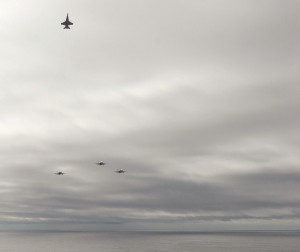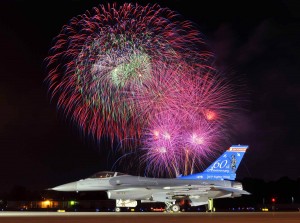
Published on July 4, 2012
Today, all of the United States celebrates its Independence Day. Therefore, it is fitting to recall the sacrifices made to achieve the freedom and liberties that we enjoy today. Many years ago, an unknown author wrote, “Freedom is never free.” Thus, it is “altogether fitting and proper” that on this day, the 4th of July, we recall not only the joys of liberty but also the sacrifices made to preserve democracy and freedom around the world.
Elmer Davis wrote, “This nation will remain the land of the free only so long as it is the home of the brave.” The history of aviation includes many examples of brave men who have lost their lives in sacrifice for freedom and the future of America. These sacrifices were made from the earliest days of flight and over the years since. Generation after generation of pilots have fought against dictatorship and tyranny, taking the skies in World War II against the fascists and Nazis, flying missions during the Cold War, and even to today in the global war against extremists who would seek to use terrorism against innocent civilians in order to promote their world view of religious tyranny. Well beyond the borders of the United States, thousands of pilots worldwide also stand ready to defend the democracies of their own countries and so, in this way, share this holiday with Americans.
In aviation, the tradition of the Missing Man Formation salutes the sacrifices of pilots lost. It was during the dark days of World War II that the first Missing Man Formations were flown. Prior to that, a flypast of a formation of aircraft had been practiced, if somewhat infrequently, during the 1930s. The first record of a flypast was in 1936 at the funeral of King George V, when he was honored with an RAF formation flyby.
During World War II, the traditional Missing Man formation was born. It involves a flight of four aircraft flying in a Finger Four formation (this also being the best formation for fighting against enemy aircraft). The flight of four makes a flyby and, at the midpoint, the lead aircraft pulls up into the skies above. The remaining three aircraft continue onward as before and fly into the distance. The vertical departure of the flight leader represents the pilot’s journey to the heavens.

Missing Man Formations are not limited to this traditional finger four format. They can be flown by a flight of planes in trail or on a horizontal line — i.e., in single file or in line abreast — either with a gap in the formation or with a pull-up by one of the members of the flight. At the funeral of USAF General Hoyt Vandenberg, a Missing Man Formation was flown exactly this way with jets and a single gap in the line. While there may be variations on the theme, however, the meaning is always the same — to recall the sacrifices made.
The Independence Day of the 4th of July may be an American holiday, but it is also an opportunity for all those who have the privilege to live in freedom around the world to recall those who made “the ultimate sacrifice” in the fight for their own liberty.
One More Bit of Aviation Trivia
Every Independence Day, the evening skies of America are filled with fireworks. Many people have asked over the years if the “rockets red glare” are a danger to airplanes. The simple answer is that no, they are not. Even the largest fireworks don’t shoot higher than a few hundred feet of altitude, while airplanes typically fly at least 500 feet above any crowd or building and generally fly thousands of feet up in the air. Modern airliners typically cruise at altitudes that generally range from 33,000 feet to 38,000 feet (and fireworks are quite neat to look upon from on high). The only time they come a few hundred feet above the ground is on take-off and landing — and fireworks displays aren’t generally fired off at the ends of active airport runways. With that said, transporting fireworks on board aircraft is illegal and for good reason. Of course, helicopters might have more to worry about, though we can find no evidence of a helicopter crashing due to fireworks in history (one may have crashed after being hit by a model rocket, but that’s another story).
